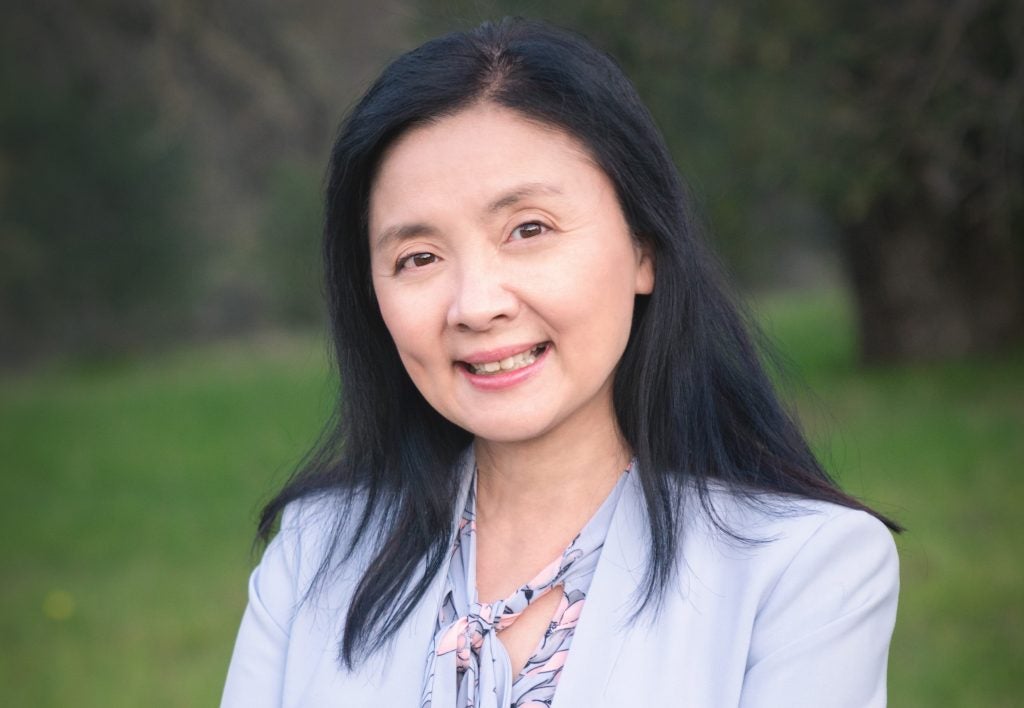As the sustainable packaging market grows alongside increasing demand from consumers, companies are racing to manufacture viable alternatives to problematic materials such as plastic.
Jumping headfirst into this race is Blue Lake Packaging, which produces eco-friendly solutions to combat the escalating plastic waste and climate change crisis.
The California-based company’s fibre-based packaging innovations stand at the intersection of sustainability and technology, driven by founder Ying Liu’s extensive experience as a former executive at Apple.
Using her understanding of working at the forefront of technological innovation, Liu explains that Blue Lake Packaging uses “bio-based materials that are processed with as few chemicals as possible based on stringent criterion.”
Her vision of sustainable packaging was highly informed by her time at Apple managing product operations, supply chain procurement, and corporate supplier responsibilities.
“Apple is a very innovation driven company. It doesn’t take a solution as it is, but always goes deeper. When I first established Blue Lake, I found that in the packaging industry there isn’t much tendency to go deeper outside of established manufacturing capabilities and technologies.”
Liu’s company is aiming to plug this gap by “designing for sustainability, not just recyclability.”
She believes that the plastic waste crisis must be solved at the materials level, rather than dealing with the consequences of mounting plastic materials and the challenge of recycling them after the fact.
Another philosophy at Blue Lake is product driven packaging design. This means viewing packaging as more than just a decorative or protective item.
“We work on how we can make packaging minimal but still provide an engaging user experience,” says Liu.
Competition among packaging materials
Contests between proponents of different materials cause a lot of noise in the sustainable packaging market (with plastic versus paper being the classic example).
But Liu considers competition to be a force for good in driving innovation. “It pushes us to assess the real value of different solutions for manufacturers, brands, customers, and the environment itself.”
For more emerging materials such as bioplastics or natural solutions like seaweed, Liu sees great promise but is realistic about the challenges these novelties can bring thanks to her supply chain background.
“If a raw material isn’t massively accessible it will become hard to collect, process, and scale to a level that will be competitive to prevailing traditional materials like paper or plastic. This is on top of prohibitive costs.”
Blue Lake’s user-driven approach focuses on natural fibre-based materials as Liu sees opportunity in their functionality to meet structural and protective packaging requirements.
Natural fibres are also highly accessible and can be obtained from a variety of sources, from agricultural waste to the ocean to plant substances.
Taking steps towards sustainable packaging
Rising above contests between specific materials, Liu sees “a tremendous amount of effort and risk-taking from brands and manufacturers in the sustainable packaging landscape. This is bolstered by the willingness of consumers to pay a premium for eco-friendly packaging.”
She acknowledges that when companies embark on a journey into sustainable packaging, they have to deal with new vendors and solutions, volume productions, and pricing strategies.
As for Liu’s advice to companies looking to implement sustainable packaging, she emphasises that there is “a lot of low-hanging fruit with mature technologies that are cost effective.
“I’m also an advocate for minimal packaging. When it comes to cost production, companies should evaluate whether each part of their packaging provides function. This opens up space for more investment in sustainable materials.”
Blue Lake also advises its clients to look at their printing processes. Liu highlights the substantial levels of chemicals in most inks and that a reduction in printing can benefit the environment.
The same goes for lamination as in most cases once a box is laminated, it won’t be accepted by material recovery facilities for recycling.
“A lot of brands and manufacturers are more focused on branding, rather than looking at how to make their packaging more recyclable friendly,” explains Liu.
A broader goal Liu has for Blue Lake is to look beyond consumer-facing packaging and into the depths of the supply chain.
“A lot of components today are still being shipped in blister plastic trays or bags or foam. I aim to ensure all packages throughout the whole product lifecycle are more sustainable.”
With a focus on natural fibres, minimal materials, and greener supply chains, Liu’s work in the packaging industry is making a sustainable future into a reality.









